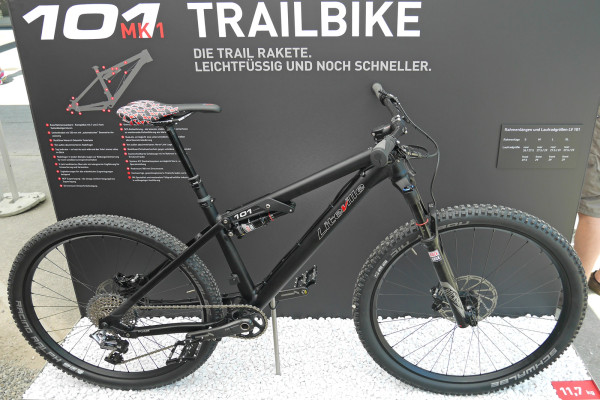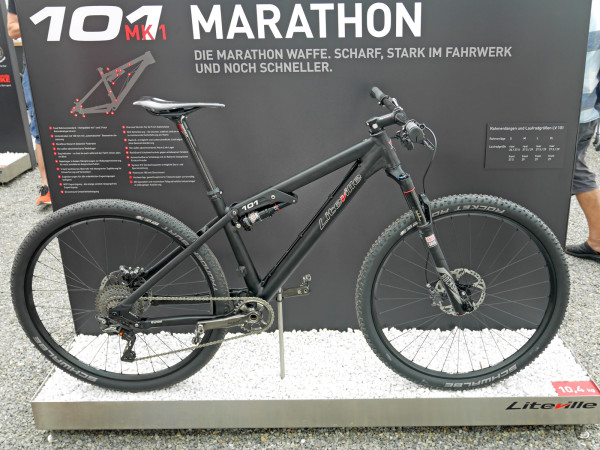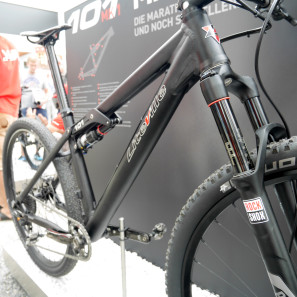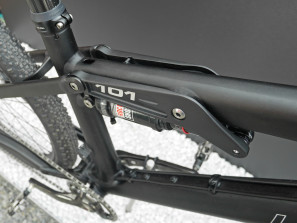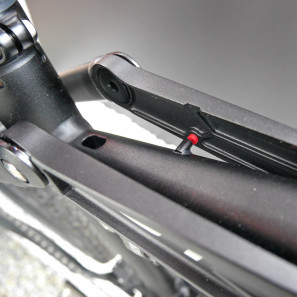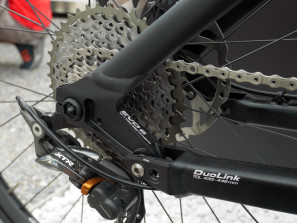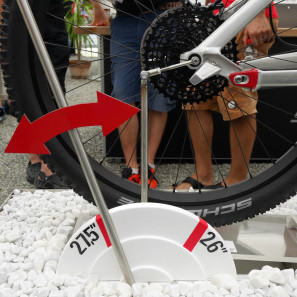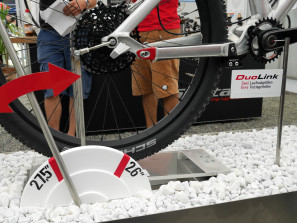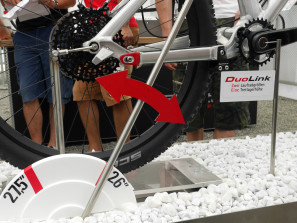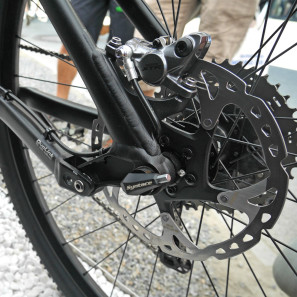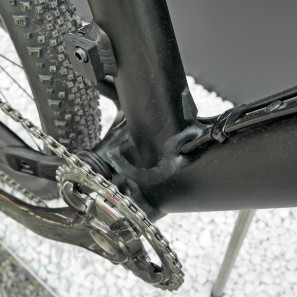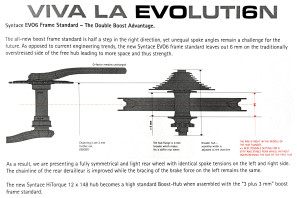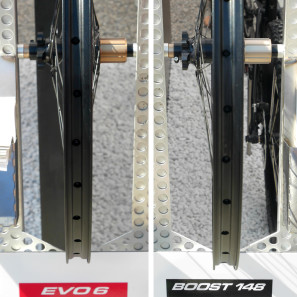Liteville did some reorganizing of their naming schemes last year and phased out their previous hardtail which had held the 101 name. (That hardtail has being reintroduced under the H-3 moniker with aggressive all-mountain builds.) So now they have reintroduced a 101 with an all-new 120mm full-suspension bike that is light enough to get built into a Marathon cross country machine and burly enough to go the other way and become a capable Trail bike. Developed as a toned-down and lightened up version of their popular All-Mountain/Enduro 301 (in its 12th iteration) the new 101 MK1 looks like it is destined for a lot of great singletrack riding.
Click through across the break for a detailed look at the new bike, its tech and features, and a look at a different approach to Boost from Liteville and sister component company Syntace…
Both Trail and Marathon versions gets spec’ed with RockShox suspension, care of SIDs up front and Monarch DebonAir shocks in the back. The 11.7kg (25.8lb) Trail version adds a dropper post, shorter stem, Syntace’s bolt-on chainguide, and beefier wheels; vs. the Marathon’s light weight cockpit and wheels from Syntace to shave off 1300g to get down to 10.4kg (22.9lbs). The 101 MK1 will be available in 4 sizes for either build (and also as a frameset) with the Small getting 27.5″ wheels, and the Medium-Extra Large going 29er. Prices and final availability should be revealed in October 2015.
The 101 MK1 takes a lot of design cues from the longer travel bikes in Liteville’s range, with a light, butted and shaped aluminum tubeset. It also gets a lighter version of the same Horst-link four-bar suspension layout with its high rocker mounted on the toptube. A nice touch found on most of their bikes, the 101 includes Liteville’s DynaLevel sag indicator which is a small pin welded to the toptube that aligns with a red pin on the rocker when you sit on the bike. This easy to see (even when riding) sag marker makes it very simple to ensure your bike stays set up optimally. Also of note on the top tube is an open port to partially route a non-internal dropper post cable.
The rear end gets a Syntace X12 thru-axle, the modular mount for Syntace’s RockGuard rear derailleur protector, a DuoLink setup, and Syntace’s new EVO6 frame standard. The 101 uses Liteville’s two-position DuoLink system that lets riders switch to a smaller rear wheel for quicker acceleration while not altering the bike’s angles or bottom bracket height.
The Liteville engineers had a fun demonstrator set up at Eurobike, so we could see the impact of (or rather lack thereof) switching rear wheel sizes with DuoLink. The shortening of the chainstays and overall wheelbase can yield a quicker accelerating and more maneuverable bike, but does not affect it’s steering characteristics or center of gravity. With only the small 101 coming standard with 27.5″ wheels, it can swap in a 26″ rear wheel with the DuoLink system. The M, L & XL start out 29er and can opt for a 27.5″ rear wheel if desired.
The bike gets a post mount 180mm rotor, and can also include a small Syntace tool that is stored in the X12 rear axle. The 101 is compatible with both single and double drivetrain setups, with a direct mount front derailleur, and includes flexible cable routing for a mix of internal and external cables to solve most any possible setup.
The EVO6 rear end is Syntace’s take on the Boost system. Instead of evenly splitting the extra Boost width with 3mm for each hub flange, the Syntace EVO6 solution puts all 6mm of it on the driveside for symmetric rear wheel builds with equal spoke tension. They make up the difference by sliding the cassette (and dropout) a further 3mm outboard (vs. Boost 148) which requires a proprietary frame setup and rear wheel. The performance and long-term wheel durability is probably there, but you are locked-in to a Syntace-compatible wheel/hub.
